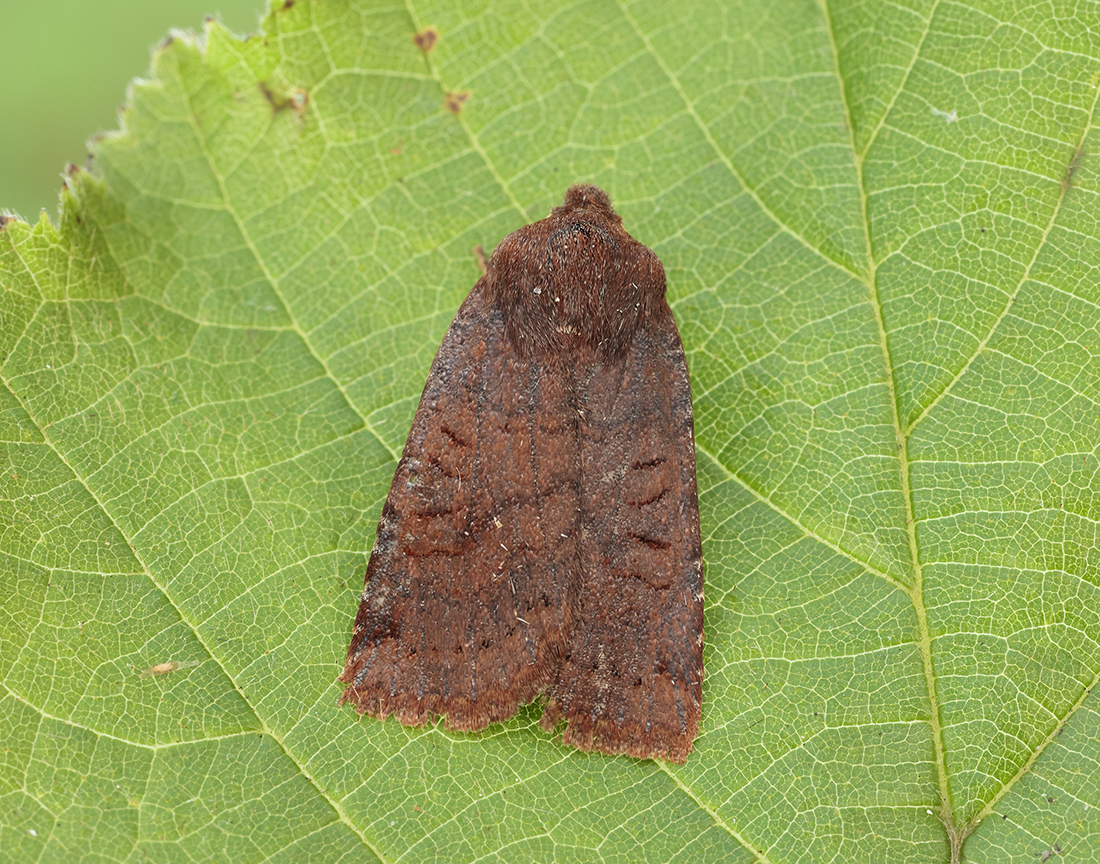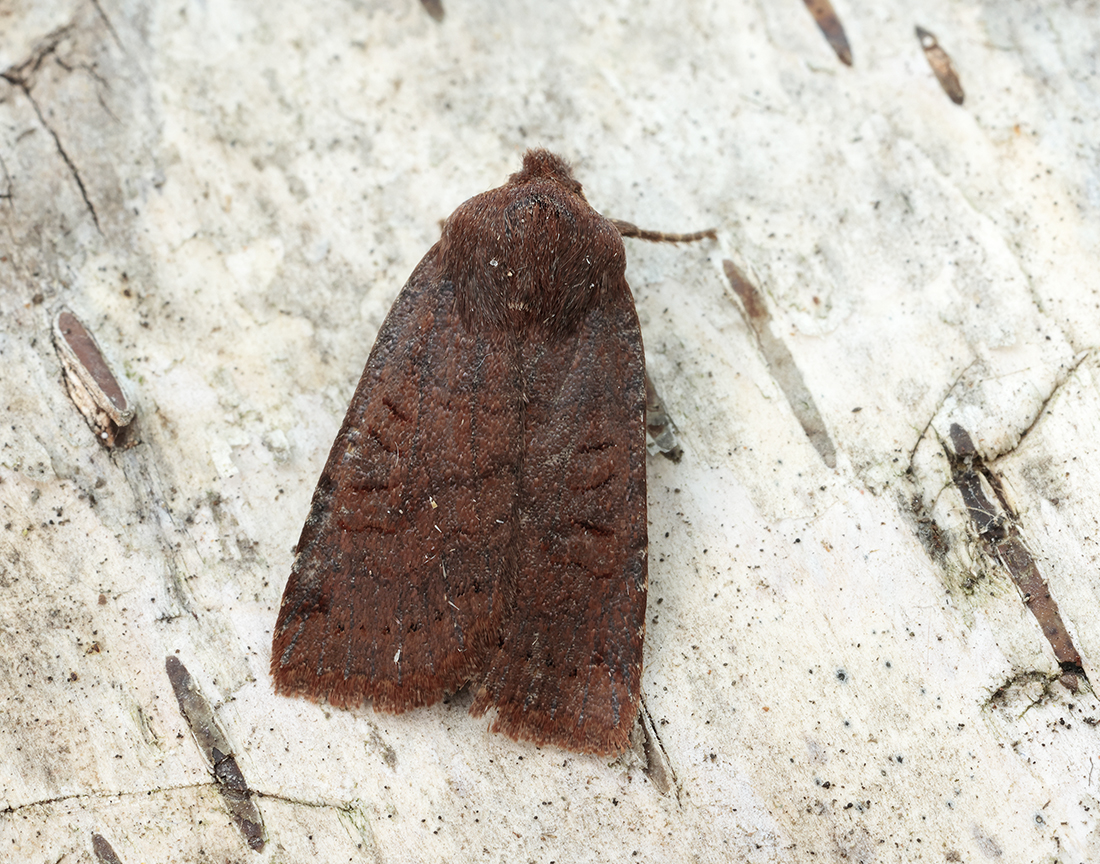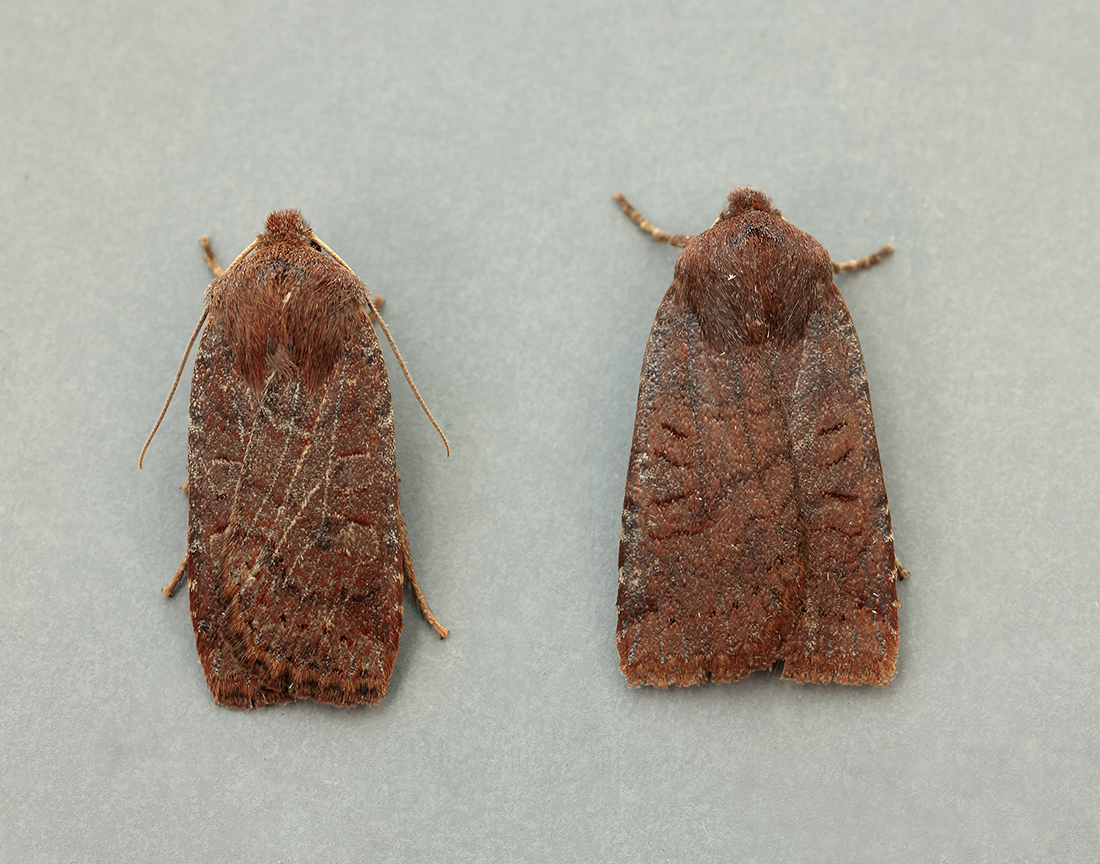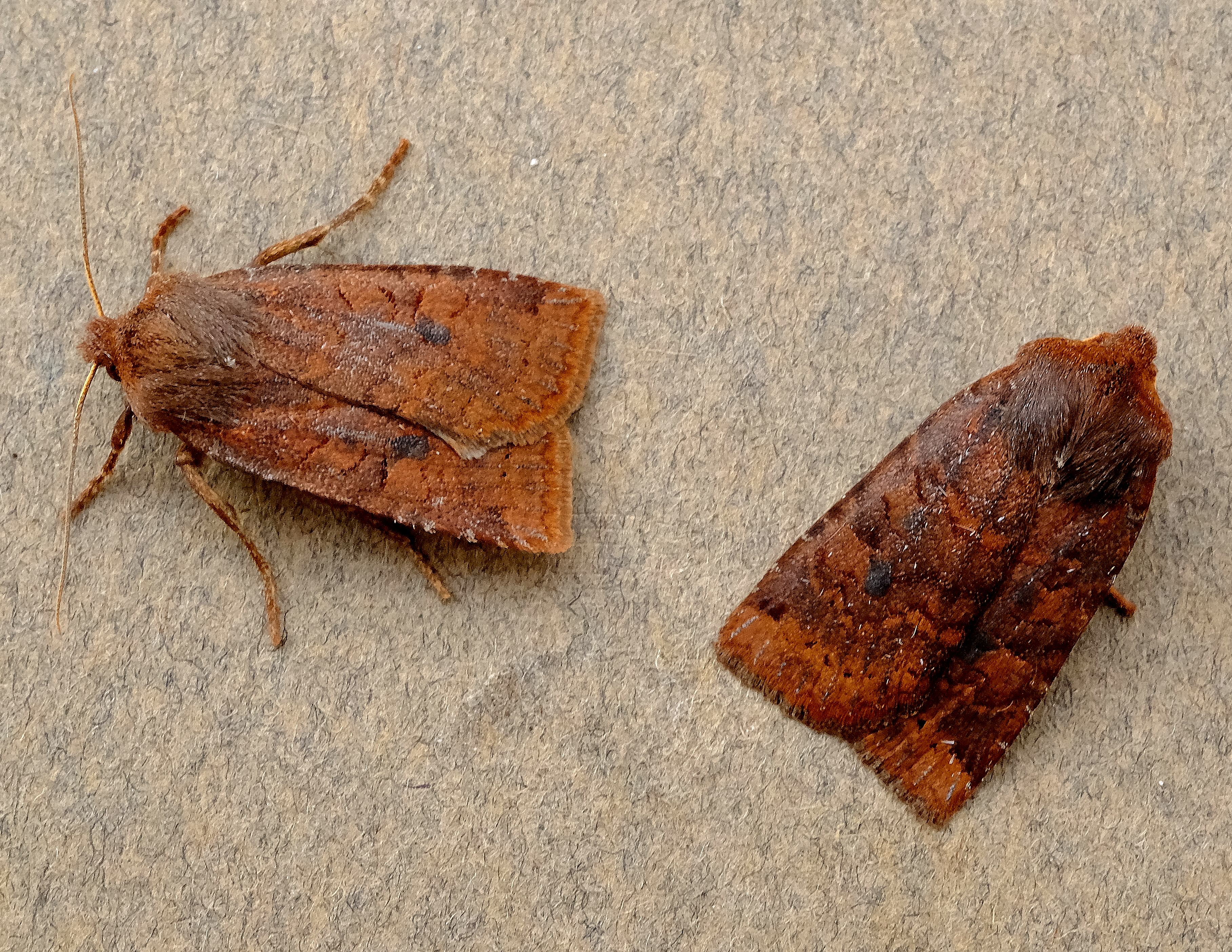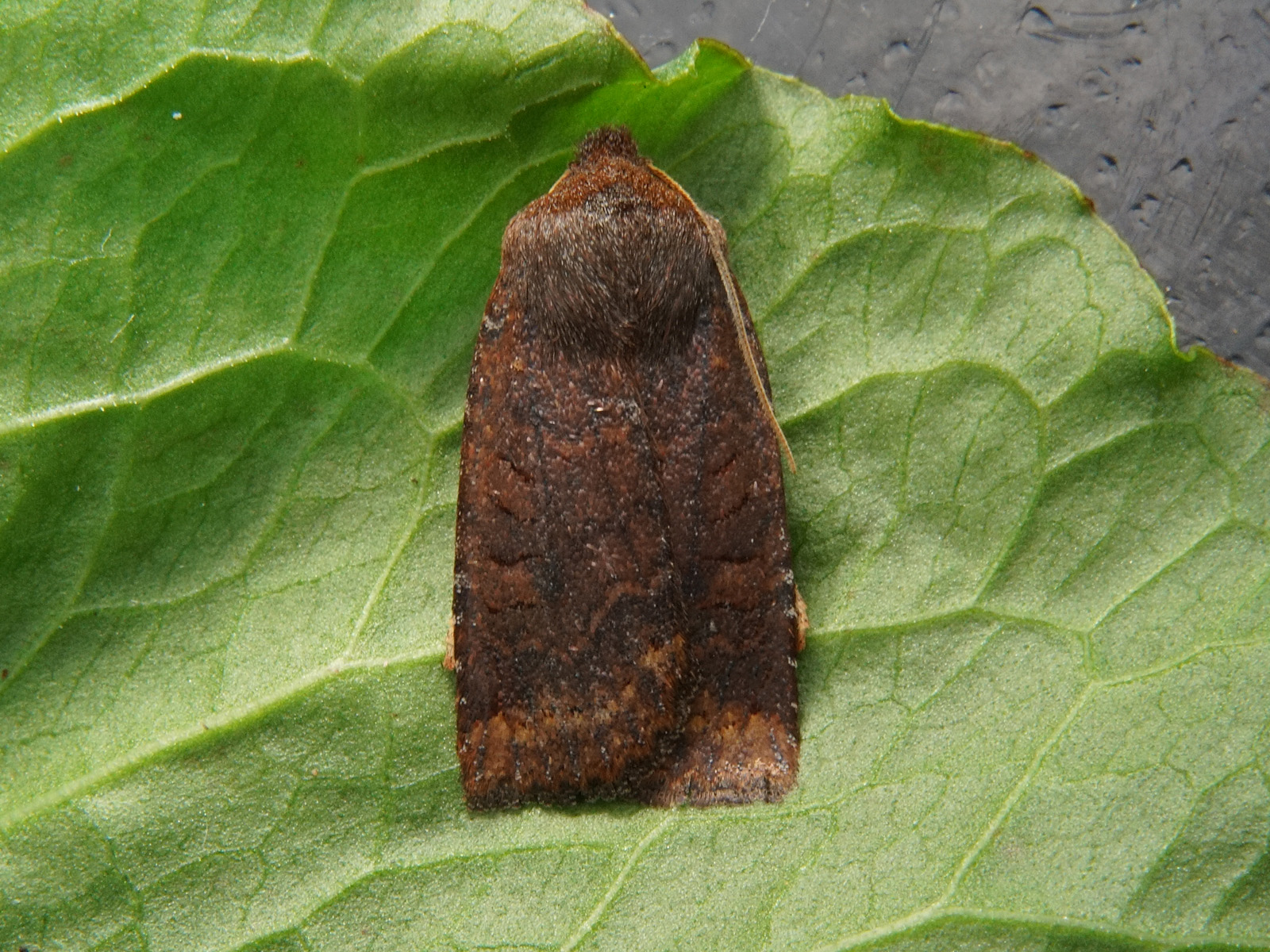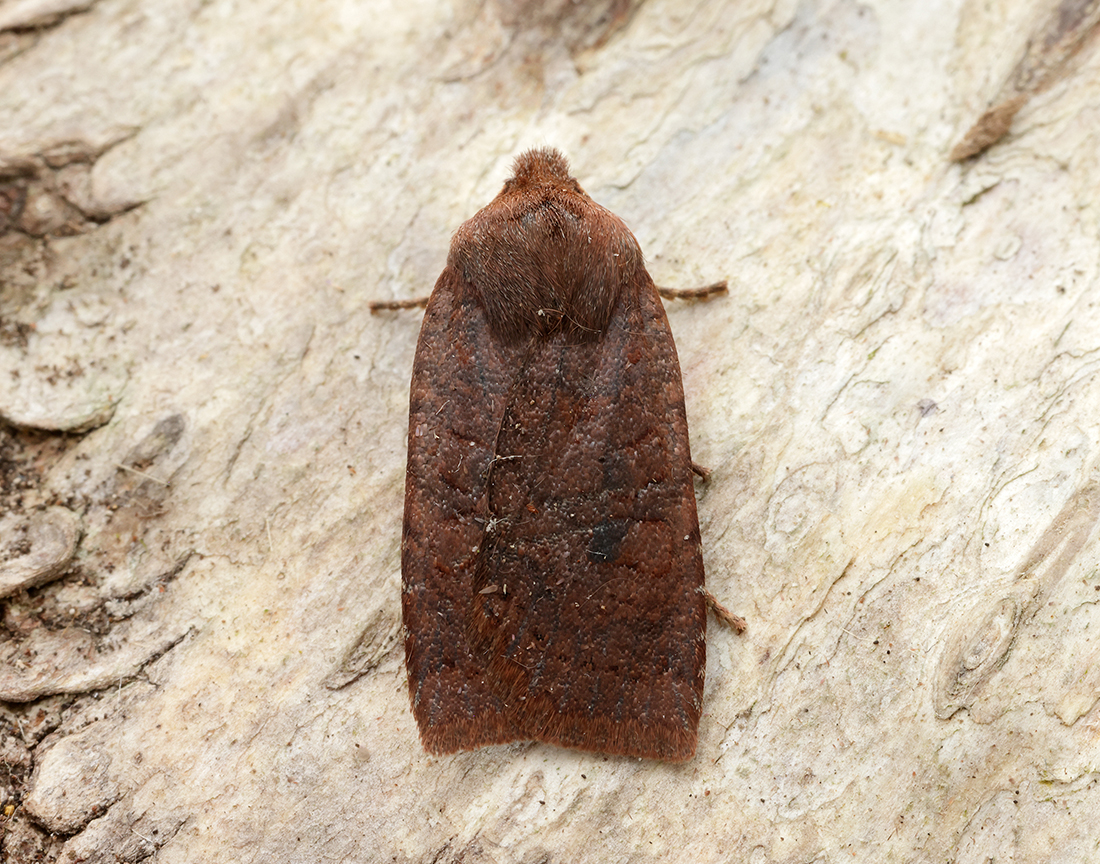Identification
Usually darker than Chestnut but care required with identification. Separated from Chestnut by the pointed or sharp wing tip (apex) and straighter outer edge (termen) of the forewing.
Recording Method.
Attracted to light, also comes to sugar and flowers.
Life cycle
One generation. Overwinters as an adult initially, mating in December or January, then eggs are laid during January or February, with the larvae appearing from April to June, feeding on leaves of trees at night, and when larger on herbaceous plants. Pupation is several weeks later in an underground loose cocoon.
Larval foodplants
Larvae feed on Blackthorn, Hawthorn, willows, oaks, docks and Dandelion.
Habitat
Woodland and farmland.
History
Sir Arthur Duncan was the first to record it in 1951 at Lannhall, Tynron. During 1976-80 there were a number of records from the Rothamsted station at Waterside Mains at Keir (VC72), with two records at the Gatehouse of Fleet station in 1979, these being the only RIS data.
It was 2005 before it was located again, this time at Kippford, and again the following year. Rockcliffe, 2010, and Cambret Hill in 2007 are the only other locations in Kirkcudbrightshire where it has been found.
The only other records for Dumfriesshire are one from Kirkton in 2009, a handful of records from Durisdeer, 2006-08 and Castle Wood, Caerlaverock in October 2010, during a Grey Daggers Moth Group field meeting.



